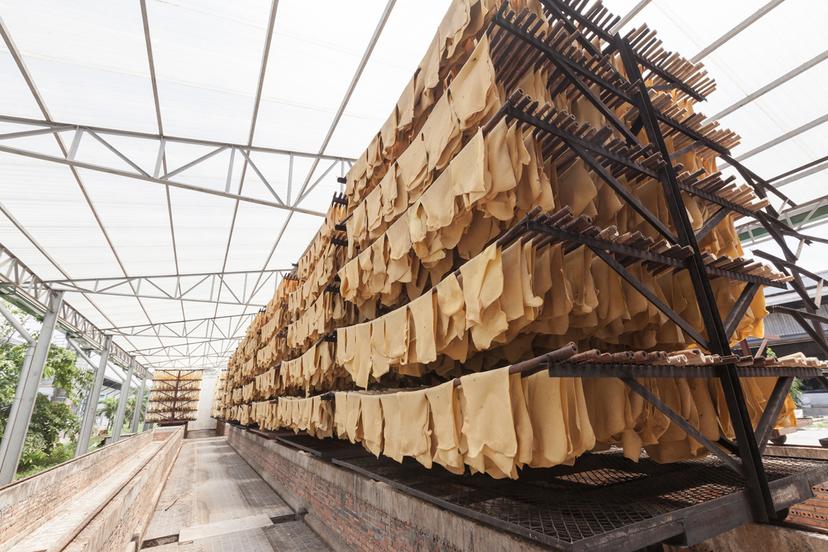Rubber

Background
Natural rubber is a pliable, stretchy material made from the milky juice of various tropical plants. Synthetic rubber, synthesized from petroleum and other minerals, was developed as a substitute for natural rubber. The material is called rubber because it appeared that one of the most practical uses of the gum would be to rub out, or erase, pencil marks.
Christopher Columbus, while on one of his voyages to the New World in the 1490s, observed natives in Haiti playing with a ball that bounced. It was made from a sticky substance drained from a certain tree through a cut in the bark. Later explorers observed American Indians using the substance to make footwear by applying the substance to earthen molds and allowing it to dry.
For a long period of time, people tried to use the milky substance to waterproof their clothing. It worked in the rain but melted in the sun. This problem plagued the would-be users of this promising material for centuries.
In 1839, however, Charles Goodyear, an American who had become obsessed with finding a way to make rubber useful in all seasons, discovered the process known as vulcanization. He dropped a glob of rubber mixed with sulfur on a hot stove. When the mixture cooled, it remained pliable in the cold and did not become sticky when exposed to heat.
Goodyear's discovery spawned the rubber industry because it made rubber practical for countless uses. Rubber manufacturing plants were established in New England and later in other parts of the country.
Rubber manufacturing moved to the Midwest in the 1870s. This was the hub of the carriage-making industry to which the rubber industry supplied solid, and eventually pneumatic (air-filled), tires. Many of the carriage makers went into automobile manufacturing in the early part of the 20th century, establishing the Midwest as the country's most important rubber manufacturing area, with Akron, Ohio, as its capital.
As the industry grew, manufacturing tended to become centralized in large plants at one location. During the 1930s, however, the trend toward decentralization began. Los Angeles was established as a center on the West Coast, and later, many factories were opened in Southern and other Midwestern states.
Meanwhile, export trade expanded. But tariff barriers and import quotas imposed by foreign countries, as well as monetary exchange problems, led to the development of American-owned rubber factories and plantations in foreign countries.
The increasing awareness of environmental problems associated with the huge glut of scrap tires has fostered research into recycling and retreading. In 1990, largely as a result of efforts by the Rubber Manufacturers Association, the Scrap Tire Management Council was founded to promote environmentally friendly ways to dispose of scrap tires. In 2001, the American Society of Testing and Materials approved new standards for tire-derived fuel (TDF). Per information from the U.S. Tire Manufacturers Association, in 2017 more than 106 million scrap tires were used as fuel, with 46 percent used in cement kilns, 29 percent in pulp and paper mills, and 25 percent in electric utility boilers.